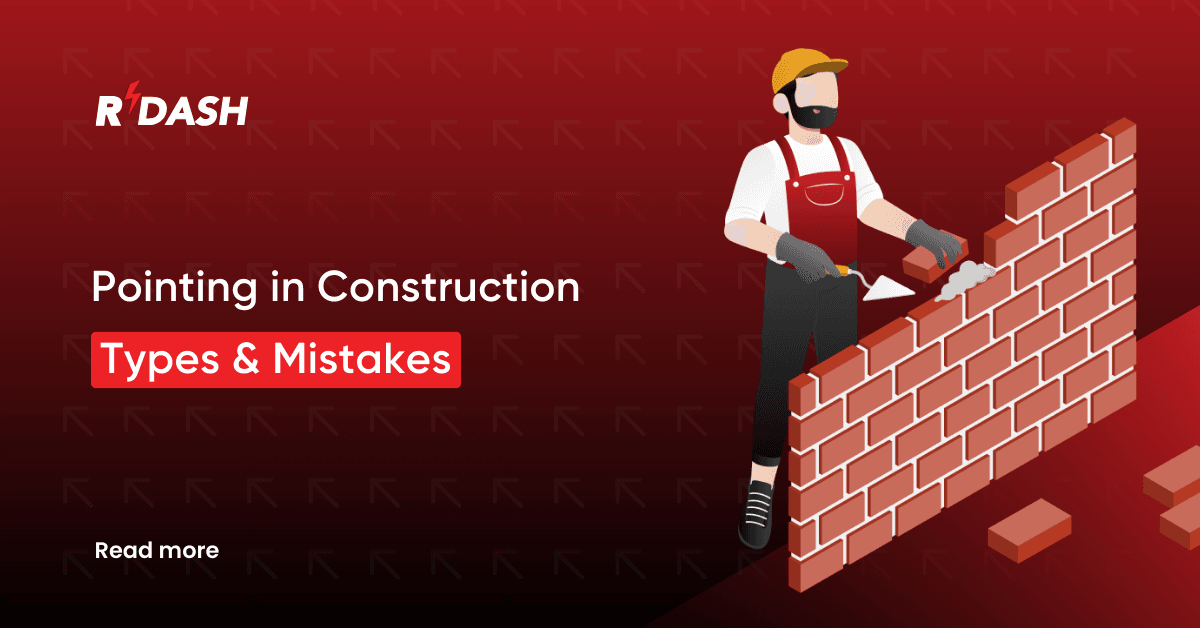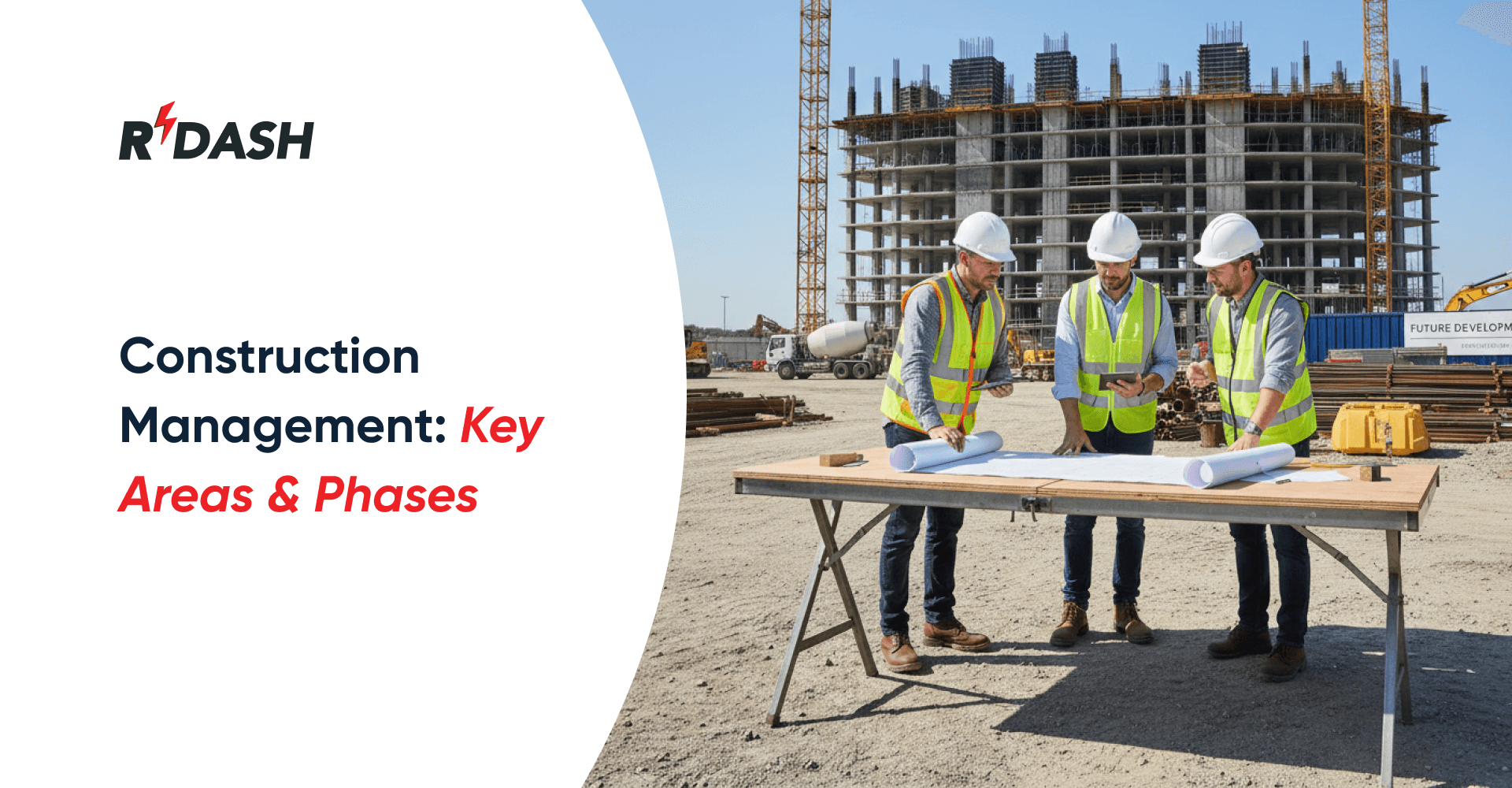In the construction industry, pointing is a term that refers to the process of finishing the joints between bricks, stones, or concrete blocks with mortar. This technique not only enhances the visual appeal of masonry but also protects it from weathering and water ingress. Let’s delve into the details of pointing and explore its various types commonly employed in construction.
What is pointing in construction?
Pointing is the method of applying a small amount of mortar into the gaps between masonry units (like bricks or stones) and shaping it in a way that ensures structural durability and aesthetic quality. This process is usually carried out after the masonry has been laid and the initial mortar has set. The primary goal of pointing is to extend the lifespan of the masonry by improving its weather resistance and enhancing its appearance.
Types of pointing in construction

Flush Pointing:
In flush pointing, the mortar is filled flush with the surface of the masonry units and then smoothed out. This type creates a smooth, uniform finish that aligns with the masonry units, offering a neat appearance.
Recessed Pointing:
This technique involves setting the mortar back from the face of the masonry units, creating a shadow effect. Recessed pointing is favored for its aesthetic qualities, as it highlights the stones or bricks, giving the wall a more textured look.
Weather-Struck Pointing:
Weather-struck pointing has the mortar smoothed down at an angle from the bottom edge of one brick to the top edge of the next. This sloping effect helps in shedding water efficiently, making it a practical choice in areas with heavy rainfall.
Tuck Pointing:
Tuck pointing is a decorative style where a fine line of (usually) white mortar is inserted along the center of the mortar joints, with the rest of the joint colored to match the bricks. This type creates a visually striking contrast that simulates the look of finely joined masonry.
Beaded Pointing:
In beaded pointing, a small raised bead of mortar is formed along the center of the mortar joints using a special tool. This style is chosen for its decorative effect and is often used in historical restoration projects.
V-Groove Pointing:
V-groove pointing involves carving a V-shaped groove into the mortar between the masonry units. This type of pointing adds a shadow line to the masonry, enhancing the overall texture of the surface.
Keyed Pointing:
Keyed pointing in construction is a finishing technique for mortar joints where a groove or indentation is created in the fresh mortar for decorative purposes. It adds visual interest and texture to masonry work while helping to hold the mortar firmly in place, enhancing the joint’s durability. This method is often used in restoration projects to emphasize aesthetic details.
Advantages of pointing in construction
Pointing in construction offers several benefits that contribute to both the functionality and aesthetics of a building. Here are some of the key advantages:
Enhanced Durability:
Proper pointing protects the joints between masonry units from exposure to water and moisture, which can cause deterioration over time. By sealing these gaps with durable mortar, pointing helps extend the life of the masonry work.
Improved Weather Resistance:
Pointing acts as a barrier against various environmental elements, such as rain, snow, and extreme temperatures, preventing water ingress and reducing the risk of weather-related damage.
Aesthetic Appeal:
Pointing can significantly enhance the visual quality of a building. Different styles of pointing can be used to highlight the masonry pattern, complement the building’s design, and improve overall curb appeal.
Maintenance Reduction:
With effective pointing, the need for frequent repairs and maintenance of the masonry is greatly reduced. This can lead to cost savings over the building’s lifespan.
Increased Property Value:
A well-pointed building not only looks more appealing but may also have a higher market value due to its improved durability and appearance.
The process of pointing in construction
Pointing in construction involves several steps that must be carried out with care to ensure effectiveness and durability. Here’s how pointing is typically done:

Preparation:
Before new pointing can be applied, old mortar needs to be removed from the joints. This is usually done using a hand tool such as a chisel or a mechanical grinder. The depth to which the old mortar is removed is critical and typically goes about one inch deep to ensure a good bond for the new mortar.
Cleaning:
Once the old mortar is removed, the joints are thoroughly cleaned of any loose material, dust, or debris. This might involve brushing the joints with a stiff brush and sometimes washing them with water to ensure a clean bonding surface.
Mixing the Mortar:
The mortar used for pointing must be compatible with the masonry units and the existing mortar to prevent damage. The mortar is mixed to the right consistency, which is usually a firm, workable paste that can be easily applied but holds its shape.
Applying the Mortar:
The mortar is carefully applied to the joints using a pointing trowel. The technique used will depend on the type of pointing selected (e.g., flush, recessed, weather-struck). The mortar needs to be compacted into the joints to avoid air pockets, which can lead to water ingress.
Tooling and Finishing:
Once the mortar is in place, it is then tooled to create the desired finish. This could involve shaping the mortar to a smooth, concave, weather-struck, or any other profile based on the architectural requirements.
Curing:
After application, the mortar needs to be kept moist for several days to cure properly. This may involve covering the pointed areas with a damp cloth or periodically misting them with water, especially in dry or hot weather.
Inspection and Touch-Up:
After the mortar has cured, a final inspection is carried out to check for any gaps or imperfections. Any necessary touch-ups are made to ensure a uniform and durable finish.
Purpose of pointing in construction
Pointing serves several critical functions in the construction of buildings, primarily concerning the longevity and integrity of masonry structures. Here’s a closer look at the primary purposes of pointing:
Protection Against Water Ingress:
The fundamental purpose of pointing is to prevent water from entering the joints of masonry works. Water ingress can lead to structural damage, including frost damage and corrosion of embedded metals, which pointing effectively mitigates.
Structural Integrity:
By filling the gaps between masonry units with durable mortar, pointing helps maintain the structural stability of the wall. It supports the masonry units, ensuring they stay in place and function cohesively.
Aesthetic Enhancement:
Pointing can significantly improve the visual appearance of a building. By using different styles and colors of mortar, builders can accentuate the masonry pattern, complement the building’s architectural style, and enhance its overall curb appeal.
Prevents Plant Growth:
Unfilled joints in masonry can be breeding grounds for plants and microorganisms. Pointing seals these gaps, preventing the growth of plants that can cause further structural damage.
Facilitates Maintenance:
A well-pointed wall simplifies ongoing maintenance and inspections, as it provides a smooth, consistent surface that is easier to monitor and repair if needed.
Types of mortar used in construction
Mortar is a building material used to join bricks, stones, or concrete blocks, while also filling the spaces between them. It helps create a strong, stable structure. The type of mortar chosen depends on the construction purpose, site conditions, and materials being used. Here are two commonly used types:
1. Cement Mortar
Cement mortar is prepared by blending cement and sand with water. It is commonly used in today’s construction projects due to its high strength and long-lasting nature. Cement mortar is ideal for brickwork, plastering, and flooring where high strength is required. The ratio of cement to sand can vary depending on the application, but a common mix is 1:6 (1 part cement to 6 parts sand).
2. Lime Mortar
Lime mortar is created by mixing lime and sand with water until it forms a smooth, usable mixture. It has a long history of use in traditional building methods and heritage structures. Unlike cement mortar, lime mortar is more flexible and allows buildings to “breathe,” making it suitable for restoration work or structures that need to handle minor movement without cracking.
FAQs
What type of mortar is used for pointing?
The type of mortar used depends on the type of masonry and the existing mortar used in the construction. Generally, a lime mortar is used for older buildings as it offers flexibility and breathability, whereas cement mortars are preferred for modern constructions due to their strength and durability.
Is there any special care required after pointing is done?
After pointing, it’s crucial to allow the mortar to cure properly. This might involve shielding the newly pointed areas from direct sunlight, wind, or rain and keeping them moist to prevent premature drying and cracking.
How is lime mortar made?
Lime mortar is typically made by mixing slaked lime (also called hydrated lime), sand, and water. A typical lime mortar mix uses 1 part lime to 2 or 3 parts sand, with the exact ratio adjusted based on the strength and type of work required. The ingredients are blended until a smooth, workable paste is formed. In some cases, additives like pozzolans or natural fibers may be included to improve performance or durability.
Lime mortar takes longer to set than cement mortar, but it offers better workability and allows moisture to evaporate, reducing the risk of trapped dampness in walls.
Next Article: Site Engineer: Tasks and Job Responsibilities







